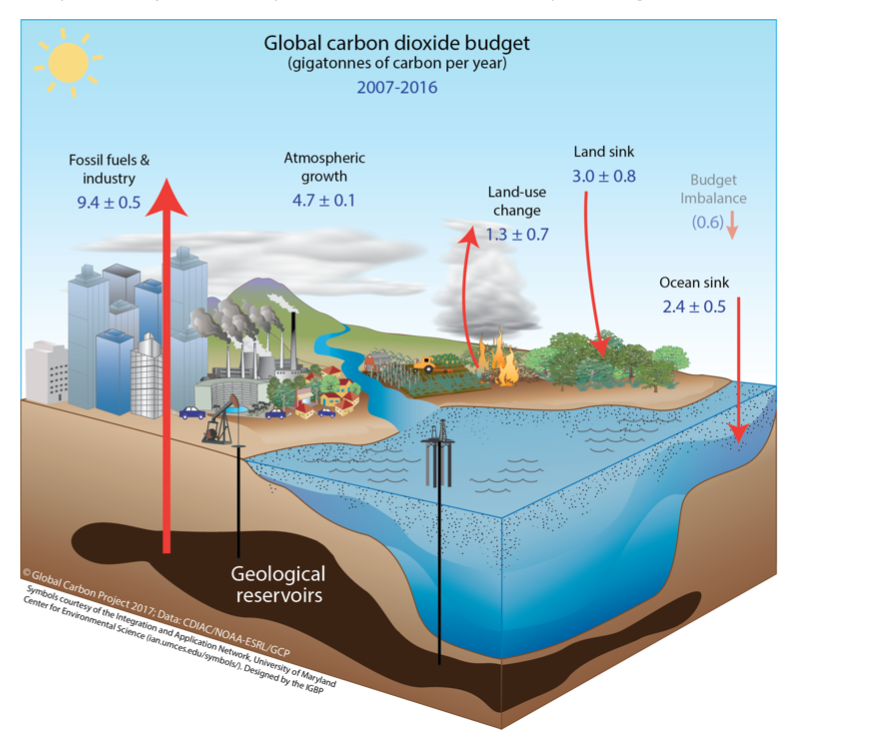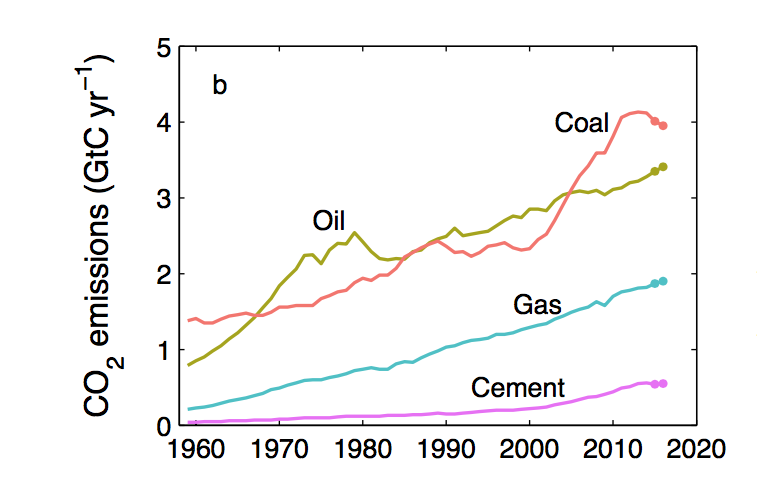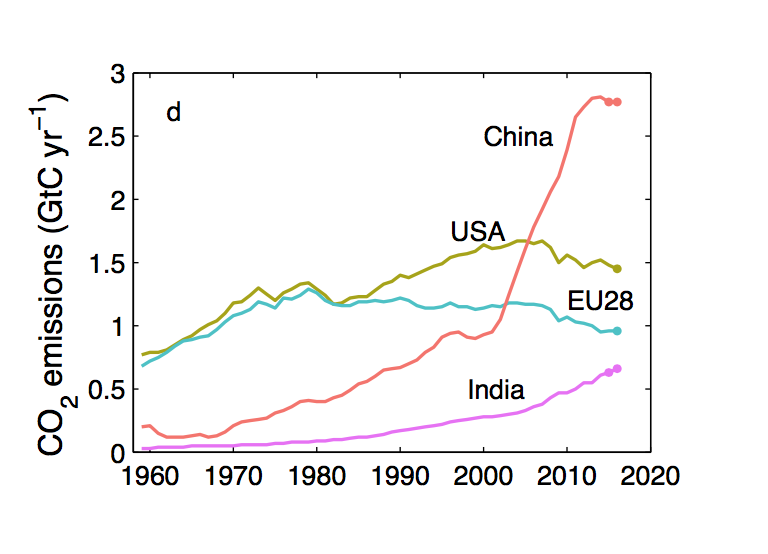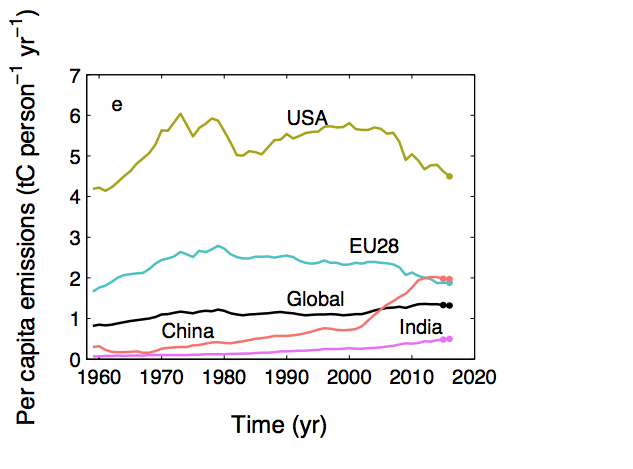The Global Carbon Budget - the annual update of the global carbon budget and trends, is a cooperation by the international scientific community observing and calculating carbon sinks and sources in the earth system.
The budget is released today at the climate negotiations at COP23 in Bonn, Germany.

In total the budget have some good news, as the 2016 budget shows that the world for the third year in a row, emissions from fossil fuels stayed almost stable between 2015 and 2016 at 9.9 Gigatonn Carbon (GtC). All publications and papers can be seen here
The not so good news is that the emissions from fossil fuels and industry are projected to increase by 2 % for 2017.
2016 emmissions distributed among fossil sources:
- coal 40%
- oil 34%
- gas 19 %
- cement 5.6%
- gas flaring 0.7%

The largest contributors are as previous years:
- China 28%
- USA 15%
- EU 10%
- India 6.7%


Atmospheric CO2 on record level
On October 30th. the UN weather agency WMO reported on a record high level of atmospheric CO2 concentration. The level of 403.3 parts per million (ppm) is reached ”because of combination of human activities and a strong El Niño event”, according to WMO. This is the highest level in 800.000 years.
The Global Carbon Budget shows that the CO2 growth rate last year was 6,1 GtC, or 2,89 ppm. This is higher than the decade average of 4,7 GtC, in 2015 the growth rate was 6,3 GtC. This is explained by the strong El Niño in 2015/2016. As we this year do not have an El Niño situation, the projection for atmospheric growth in 2017 is estimated to be 5,3 GtC.
New methodology for the land sink
About half of the carbon released to the atmosphere is removed by uptake on vegetation on land and by the ocean.
- The ocean sink was 2.6+-2.5GtC.
- The land sink was 2.7+-1.0GtC
- Budget imbalance: -0.3
Up to now, the land sink has been estimated by the residual of atmospheric growth, ocean sink and emissions. Now, the land sink have been estimated independently.
– That means that there is a residual. This can tell us something about how good we capture the variability with our observations, about our understanding of the important processes and how those are represented in the models and the integration of all the single components into the Global Carbon Budget, Meike Becker says, researcher at UiB and the Bjerknes Centre.
Becker views this as good as the residual is close to 0 and without a trend for the entire period 1870. On smaller timescales there is quite some variability (+-2GtC/yr) that is not yet explained.
– The variability that we saw that we can’t explain yet, shows how important this effort is. We still need to improve our understanding of how the carbon cycle changes and adapts to climate change. Any change in the ocean or land sink will directly effect the CO2 remaining in the atmopshere. To better estimate and predict these, it is very important that we continue our efforts to monitor the ocean and the land.
In Bergen, Becker and her colleagues are central in monitoring the ocean carbon uptake. Becker emphasises the importance and value of the existing cooperation with the shipping industry, as it allows the scientific community to monitor the surface ocean all year long with a high temporal resolution.
Researchers at the Bjerknes Centre contributing to the Global Carbon Budget are: Meike Becker (UiB), Benjamin Pfeil (UiB), Jörg Schwinger (Uni Research) and Ingunn Skjelvan (Uni Research).


